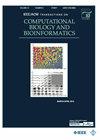MMD-DTA: A Multi-Modal Deep Learning Framework for Drug-Target Binding Affinity and Binding Region Prediction
IF 3.4
3区 生物学
Q2 BIOCHEMICAL RESEARCH METHODS
IEEE/ACM Transactions on Computational Biology and Bioinformatics
Pub Date : 2024-08-29
DOI:10.1109/TCBB.2024.3451985
引用次数: 0
Abstract
The prediction of drug-target affinity (DTA) plays a crucial role in drug development and the identification of potential drug targets. In recent years, computer-assisted DTA prediction has emerged as a significant approach in this field. In this study, we propose a multi-modal deep learning framework called MMD-DTA for predicting drug-target binding affinity and binding regions. The model can predict DTA while simultaneously learning the binding regions of drug-target interactions through unsupervised learning. To achieve this, MMD-DTA first uses graph neural networks and target structural feature extraction network to extract multi-modal information from the sequences and structures of drugs and targets. It then utilizes the feature interaction and fusion modules to generate interaction descriptors for predicting DTA and interaction strength for binding region prediction. Our experimental results demonstrate that MMD-DTA outperforms existing models based on key evaluation metrics. Furthermore, external validation results indicate that MMD-DTA enhances the generalization capability of the model by integrating sequence and structural information of drugs and targets. The model trained on the benchmark dataset can effectively generalize to independent virtual screening tasks. The visualization of drug-target binding region prediction showcases the interpretability of MMD-DTA, providing valuable insights into the functional regions of drug molecules that interact with proteins.MMD-DTA:用于药物与目标结合亲和力和结合区域预测的多模态深度学习框架。
药物-靶点亲和力(DTA)预测在药物开发和潜在药物靶点鉴定中起着至关重要的作用。近年来,计算机辅助 DTA 预测已成为该领域的一种重要方法。在本研究中,我们提出了一种名为 MMD-DTA 的多模态深度学习框架,用于预测药物与靶点的结合亲和力和结合区域。该模型可以在预测 DTA 的同时,通过无监督学习学习药物-靶点相互作用的结合区域。为此,MMD-DTA 首先使用图神经网络和靶标结构特征提取网络,从药物和靶标的序列和结构中提取多模态信息。然后,它利用特征交互和融合模块生成用于预测 DTA 的交互描述符和用于预测结合区域的交互强度。我们的实验结果表明,基于关键评价指标,MMD-DTA 优于现有模型。此外,外部验证结果表明,MMD-DTA 通过整合药物和靶标的序列和结构信息,增强了模型的泛化能力。在基准数据集上训练的模型可以有效地泛化到独立的虚拟筛选任务中。药物-靶点结合区域预测的可视化展示了 MMD-DTA 的可解释性,为了解药物分子与蛋白质相互作用的功能区域提供了宝贵的见解。
本文章由计算机程序翻译,如有差异,请以英文原文为准。
求助全文
约1分钟内获得全文
求助全文
来源期刊
CiteScore
7.50
自引率
6.70%
发文量
479
审稿时长
3 months
期刊介绍:
IEEE/ACM Transactions on Computational Biology and Bioinformatics emphasizes the algorithmic, mathematical, statistical and computational methods that are central in bioinformatics and computational biology; the development and testing of effective computer programs in bioinformatics; the development of biological databases; and important biological results that are obtained from the use of these methods, programs and databases; the emerging field of Systems Biology, where many forms of data are used to create a computer-based model of a complex biological system

 求助内容:
求助内容: 应助结果提醒方式:
应助结果提醒方式:


